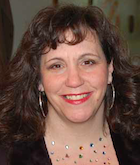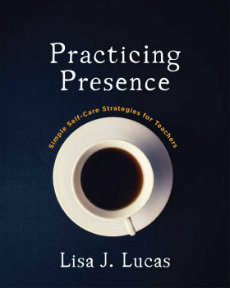Simple Self-Care Strategies for Teachers
Practicing Presence: Simple Self-Care Strategies for Teachers
By Lisa J. Lucas
(Stenhouse Publishers, 2018 – Learn more)

Social emotional health and learning (SEL) has long been on the education landscape. However, until very recently, the focus has been on SEL for students. Thankfully that focus has widened to include a thoughtful discussion of helping teachers guard their own social and emotional learning and health.

The book grabbed me early on when I recognized many teachers I know in this powerful line, “I realized I was getting through my life rather than living it.” The book is filled with strategies to help teachers become more “mindful” so that we can truly live and relish our best lives.
Wide ranging resources for mindful teaching
Not only is the content great, but the writing is engaging and sprinkled with thoughtful quotes from leaders in every field, historical figures, and even ancient proverbs. Additionally, in each chapter there are helpful charts, checklists, and practical strategies for connecting the topic of focus to our work in the classroom.
The text is divided into eight chapters plus an introduction. Each first letter of a chapter title builds an acronym that spells the word presence. Presence is, of course, another word for mindfulness, and each chapter helps the reader on the road to what Lucas refers to as “mindful teaching.”
Chapter 1: Practicing Presence
Here readers find an overview of what practicing presence or mindfulness means, why it is important, and what it might look like in the life of a teacher. Teachers are encouraged to develop calming routines that keep drama at bay. These routines range from choosing your clothes the night before to finding time to meditate.
Chapter 2: Responding Rather than Reacting
This chapter helps teachers learn to reframe, relax, slow down and respond thoughtfully to stimuli rather than to mindlessly react in ways that cause stress or drama. One strategy offered is to focus on being continuously grateful. Since reading this book, I have made it a routine to mentally list things and people I am grateful for every time I wash my hands. I can honestly say this simple shift made the cost of the book worth it!
Chapter 3: Epigenetics: Ever Heard of It?
Put simply, epigenetics is “the science of how environmental signals select, modify, and regulate gene activity” (p. 58). In essence, though we may have certain genetic dispositions, we can overcome them with our actions. This, Lucas says, makes it critical for us to learn how to control our stress as a way to maintain physical and emotional health because “our choices today not only affect the present, but also impact the future” (p. 67).
Chapter 4: Simple Self-Care
How often do teacher take time to treat themselves to the emotional care they need? Are there times of the year when teachers are less likely to take time for themselves? What can teachers do to take time for self-care every day? These are the questions explored in chapter 4. Ideas from mini-retreats to taking an hour away from texts and emails to short walks and long meditation are shared.
Chapter 5: Everlasting Focus
This chapter can be summed up with one sentence: By doing less, we do more and do it better. Here Lucas exhorts us to stop wearing the label “crazy busy” as a badge of honor, to not let technology distract us or divide our attention, to recognize that multitasking is a fallacy, and to slow down and focus our energy to stave off fatigue.
Chapter 6: Noticing the Negativity Bias
This is another chapter that shares popular science. Here, neuroplasticity is defined as new neurons (brain cells) being created and changed based on our day-to-day ways of thinking, doing, and experiencing life. The key to staying more positive and thus, happier, is to train our brains to avoid negative thoughts and actions.
Chapter 7: Can’t We Just Get Along?
Chapter 7 deepens and builds on the preceding chapters by focusing on how to make the most of our relationships with others. Avoiding gossip and judgemental thinking and replacing them with compassion and collaborations are discussed.
Chapter 8: Envisioning Endless Possibilities for Education
At the heart of this final chapter is the idea that all of the lessons in the book can lead to better, more productive schools and happier lives for both teachers and the students they serve.
I enjoyed Practicing Presence. Like so many other teachers, I work hard and probably don’t practice enough self-care. Reading this book helped me reflect, reframe, and refresh. It is likely to do the same for most readers who spend a large portion of their time in classrooms.
Rita Platt (@ritaplatt) is a National Board Certified teacher with master’s degrees in reading, library, and leadership. Her experience includes teaching learners in remote Alaskan villages, inner cities, and rural communities. She currently is a teacher-librarian, teaches graduate courses for the Professional Development Institute, writes for We Teach We Learn and blogs at MiddleWeb’s Heart of the School.































Thank you for the positive review. The fact that it made you reflect, reframe and refresh are the best 3 R’s I can imagine for a busy educator.
Best,
Lisa